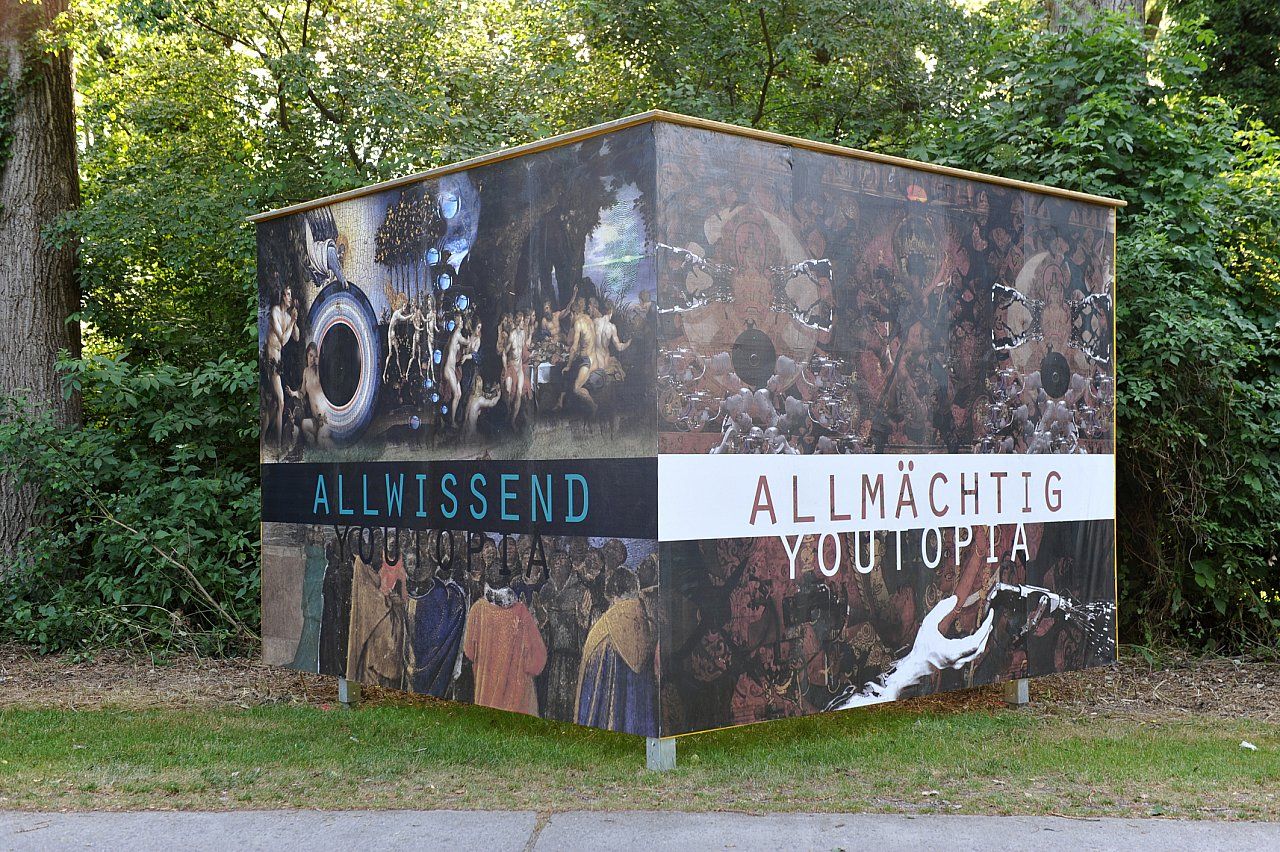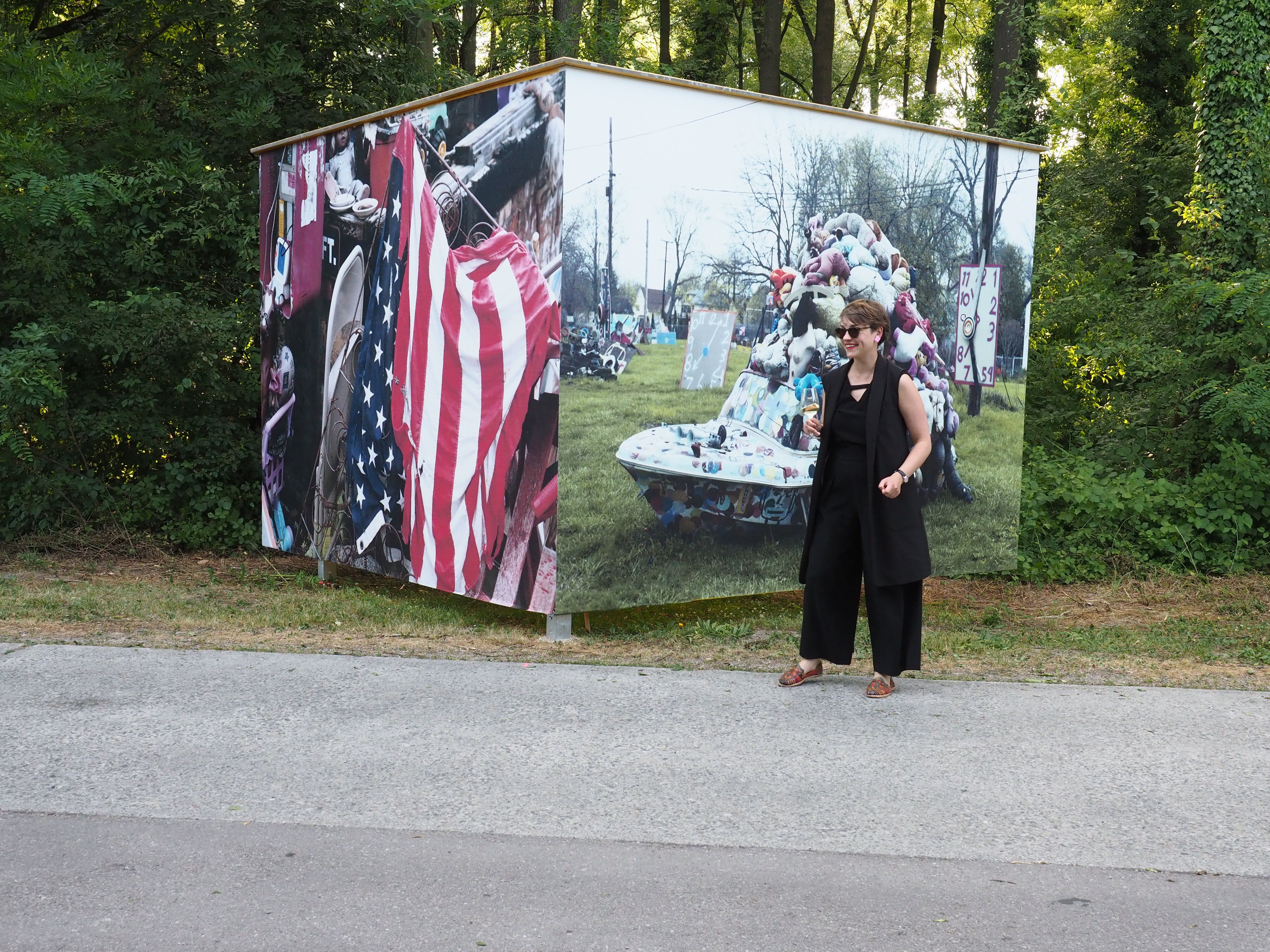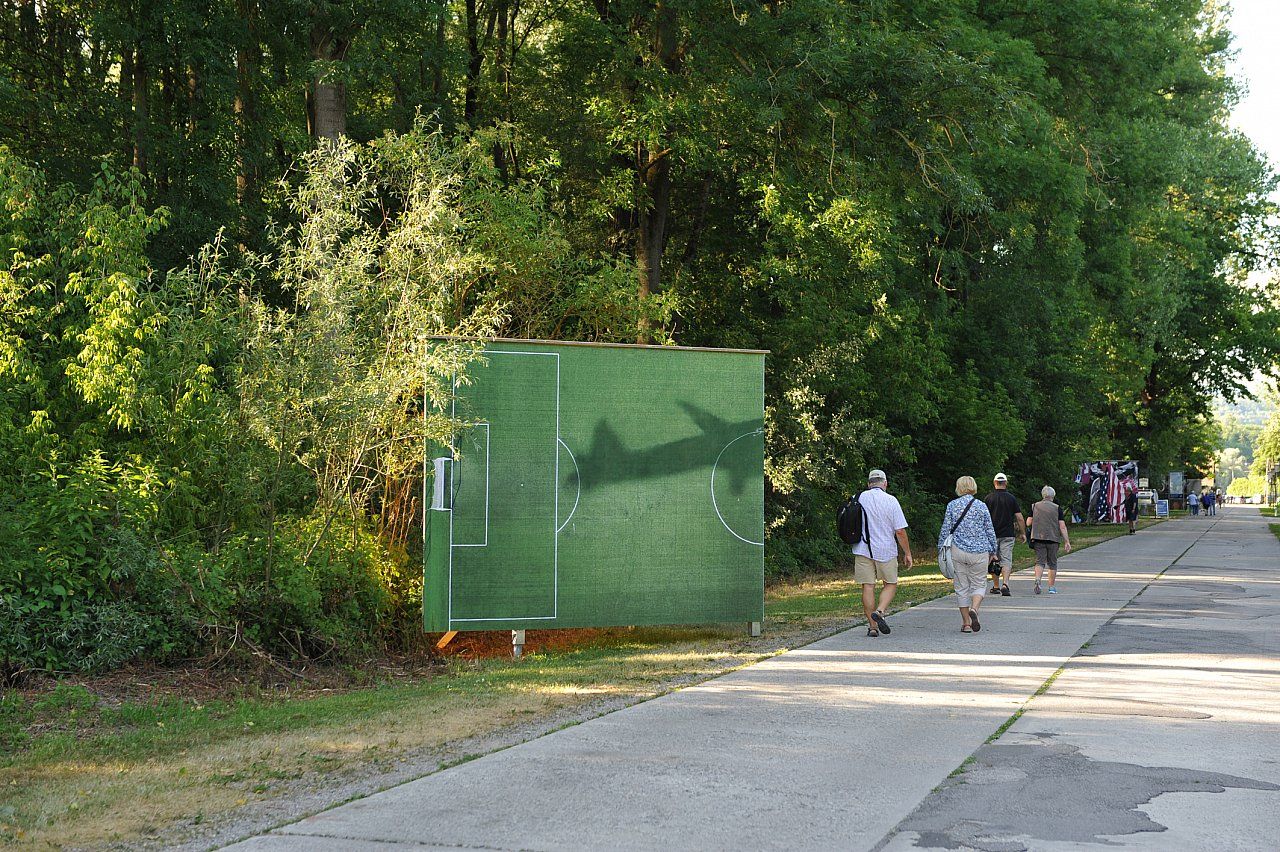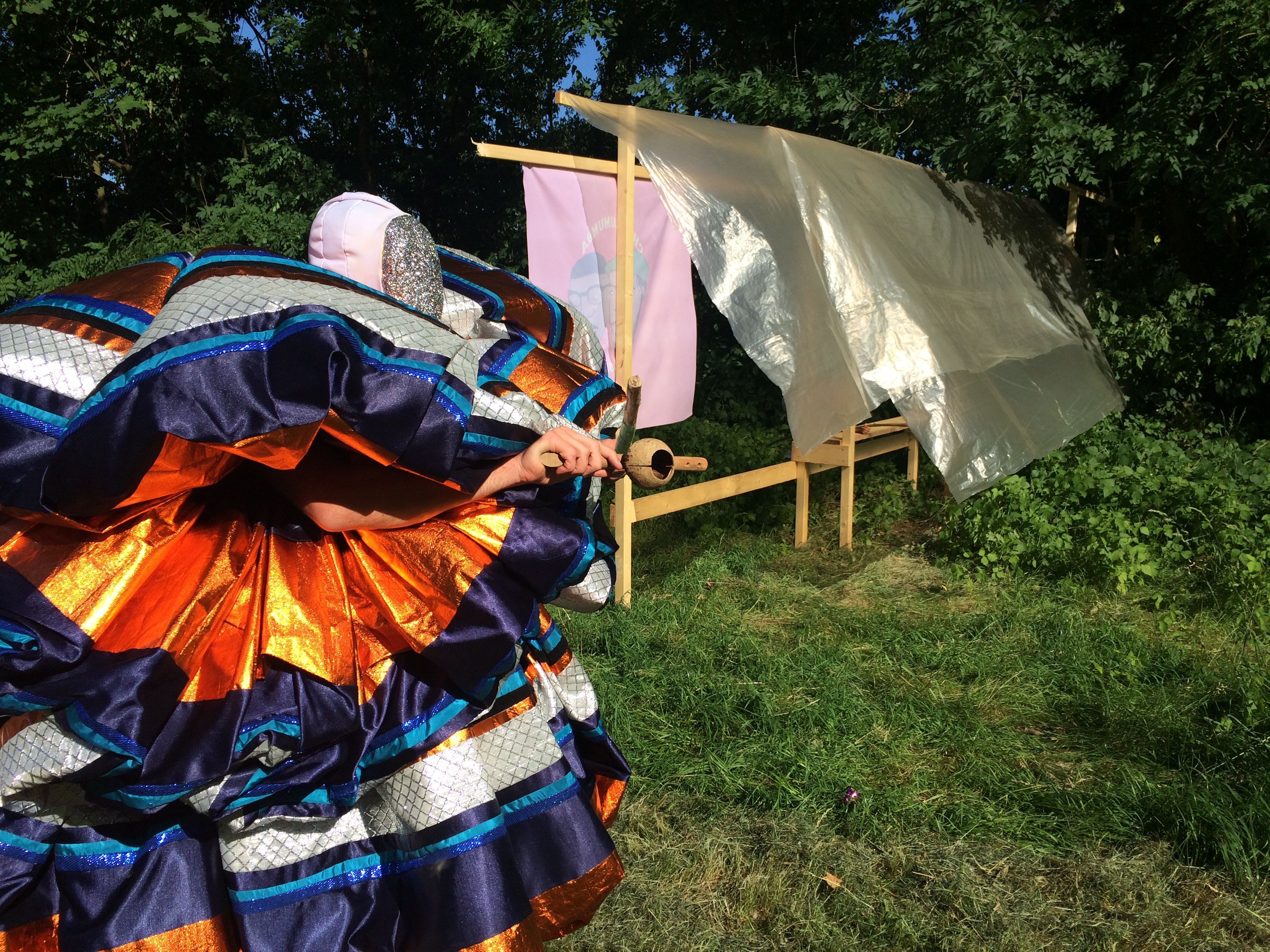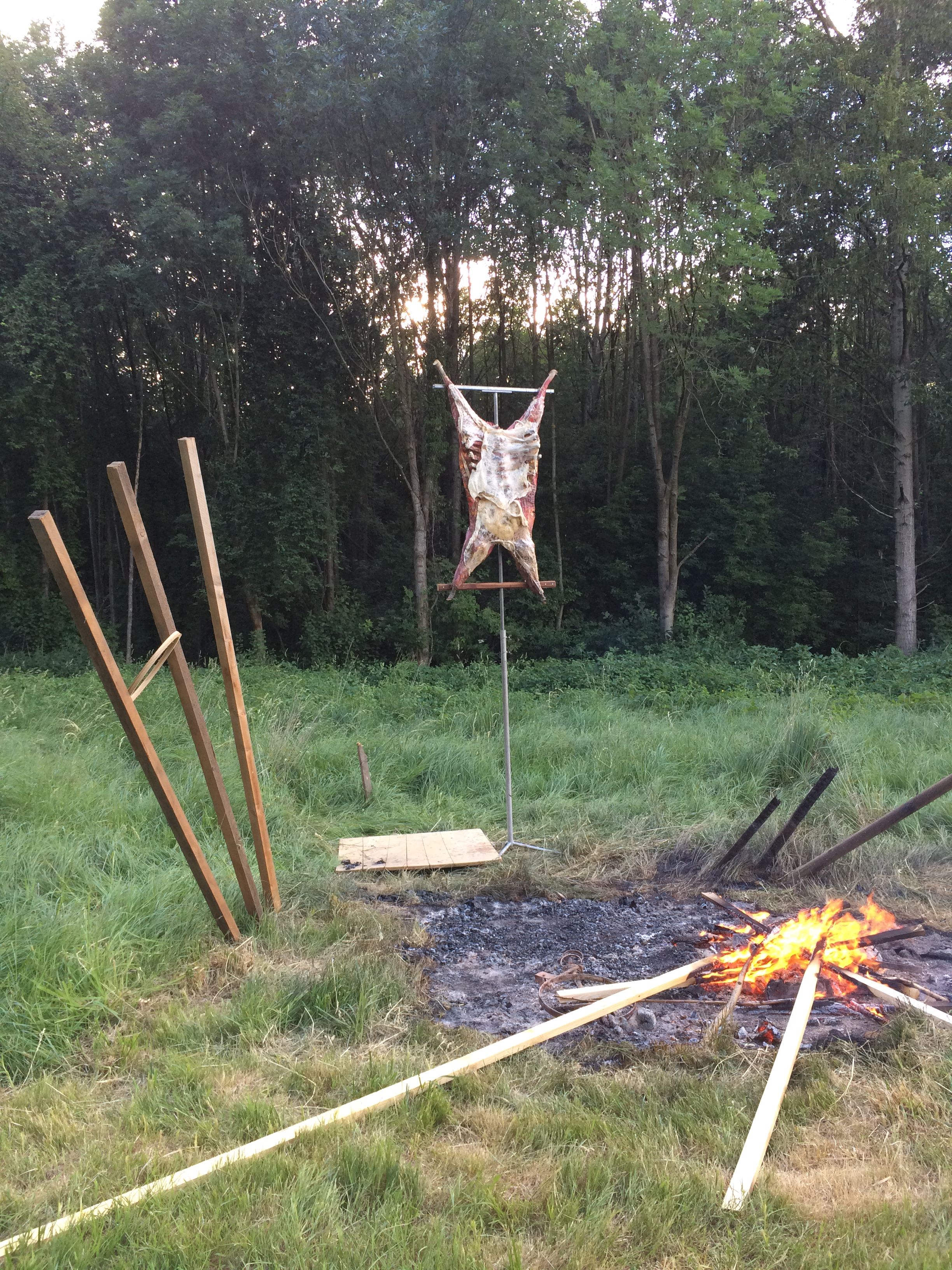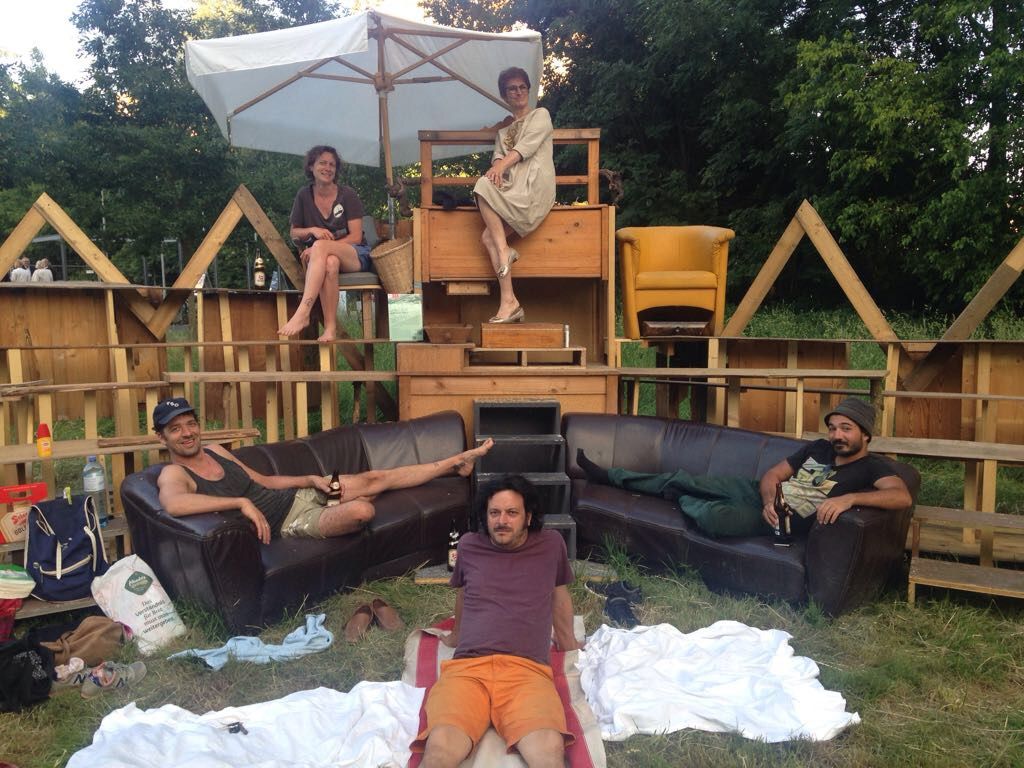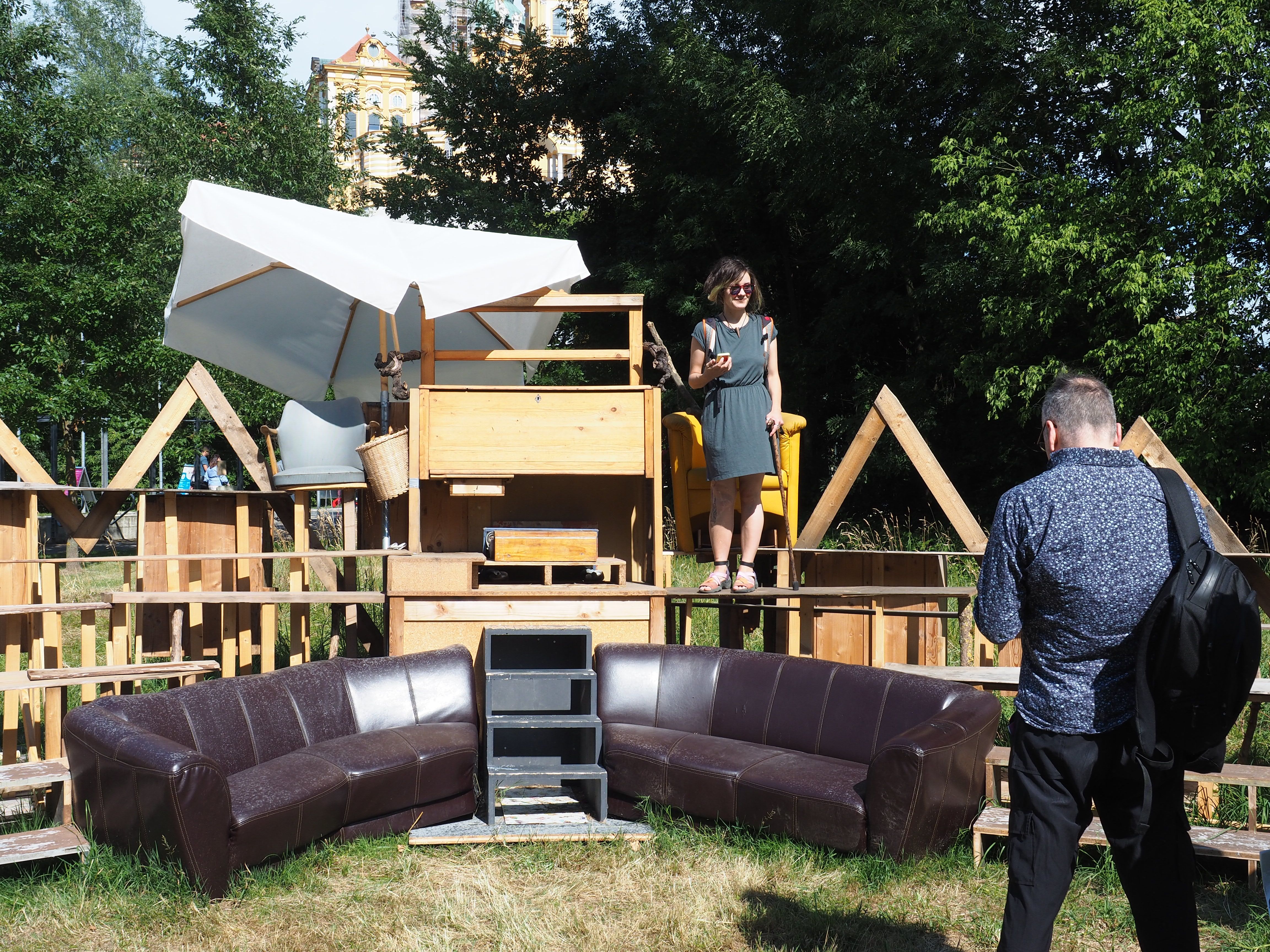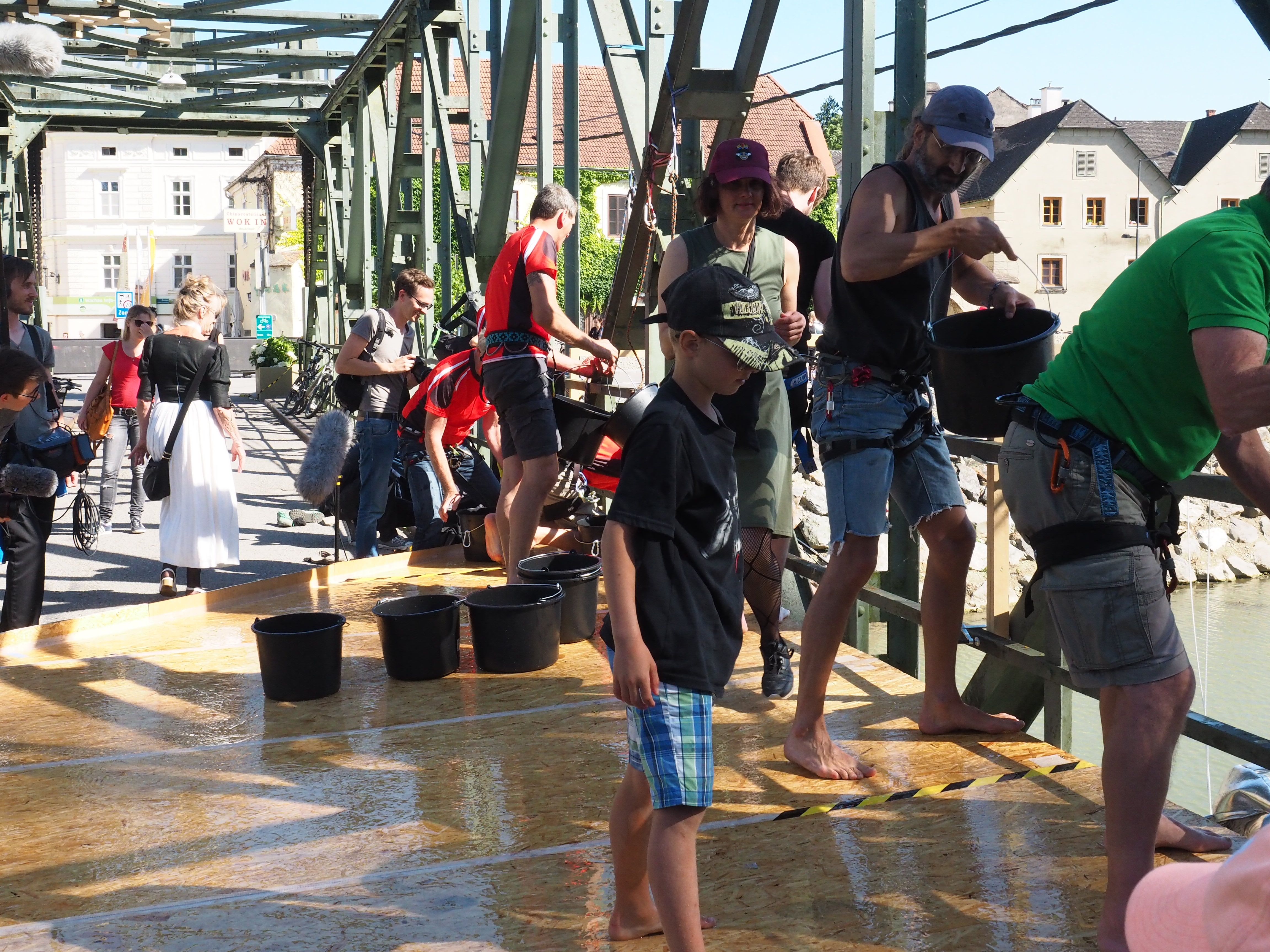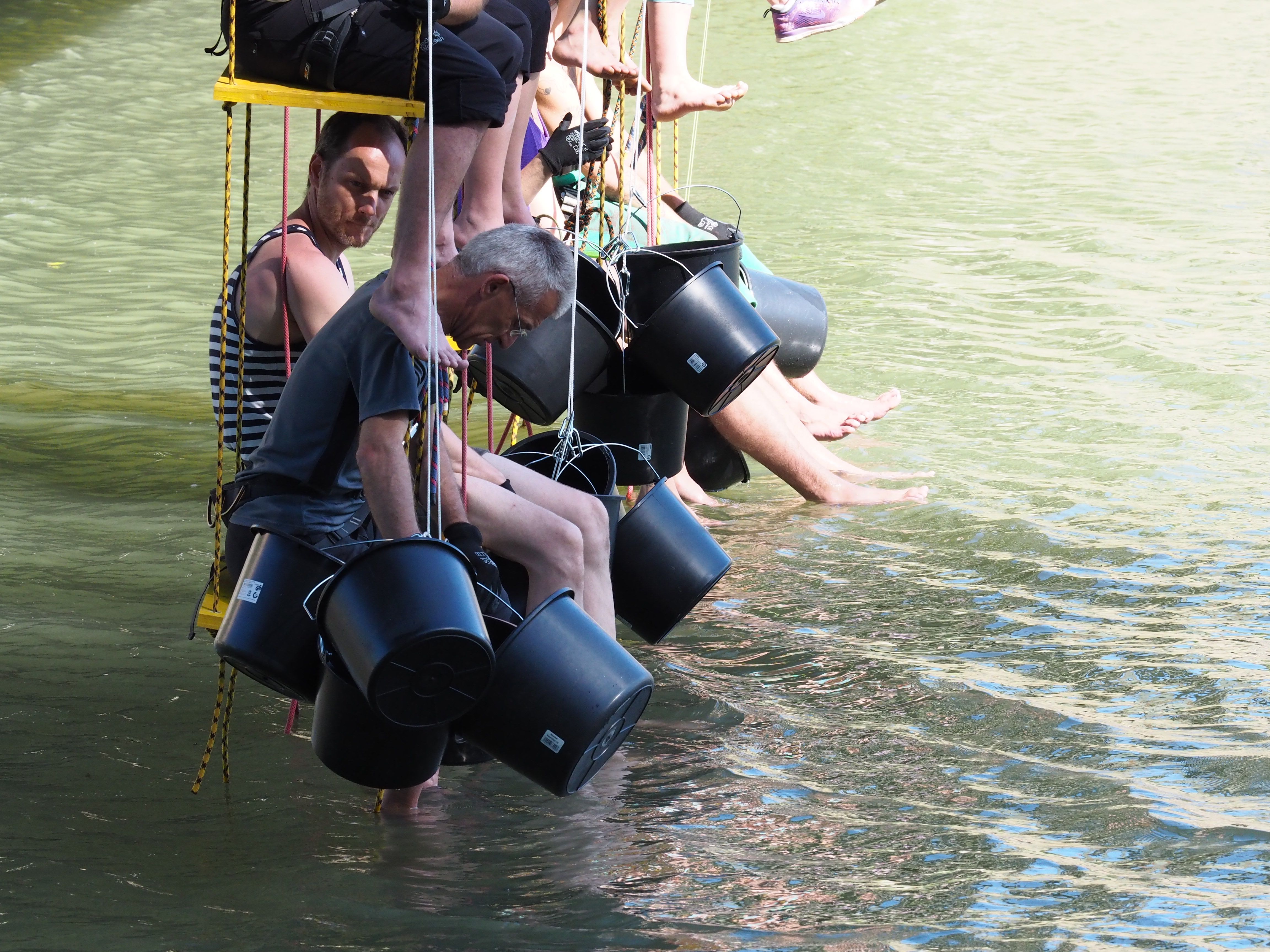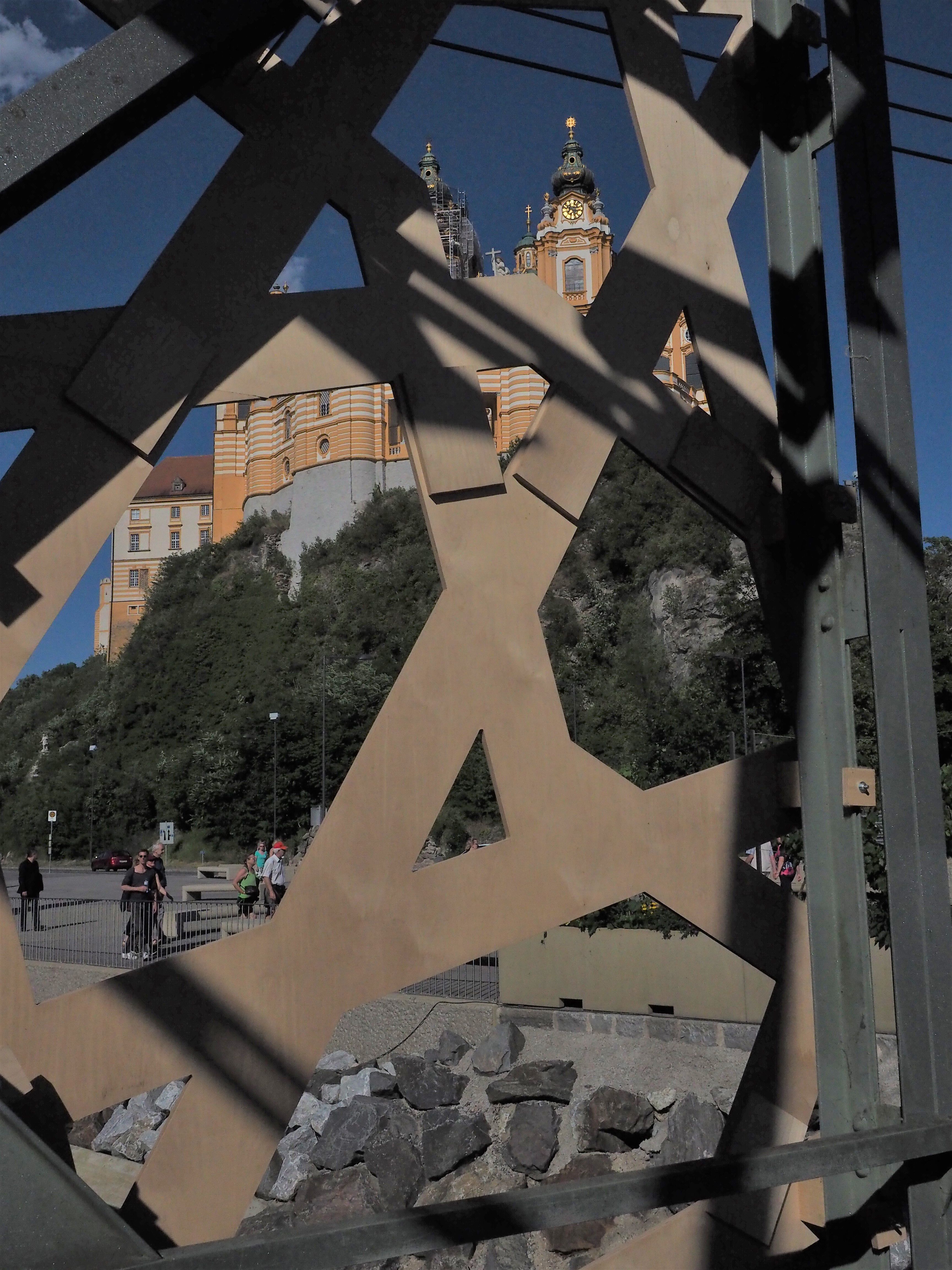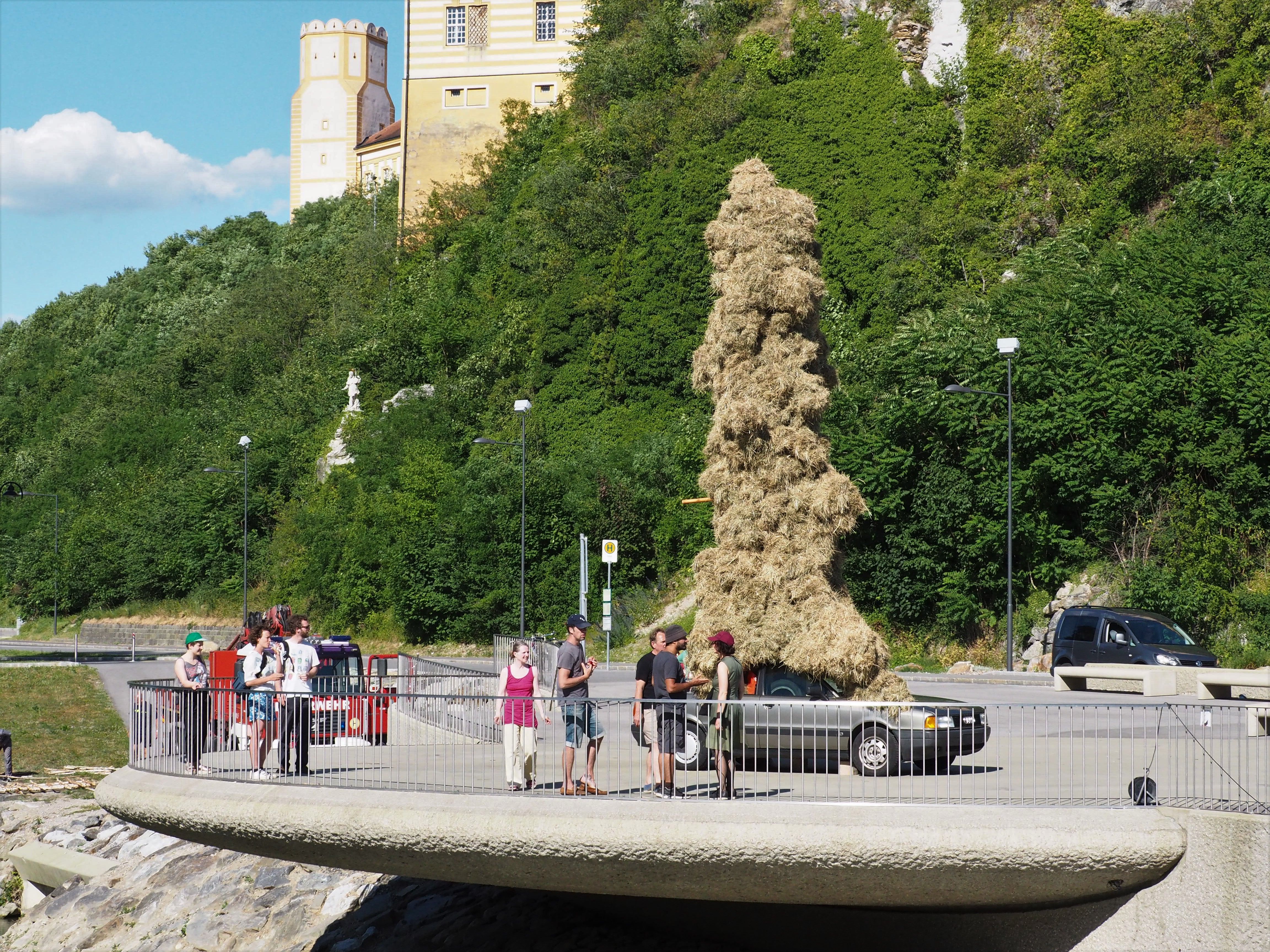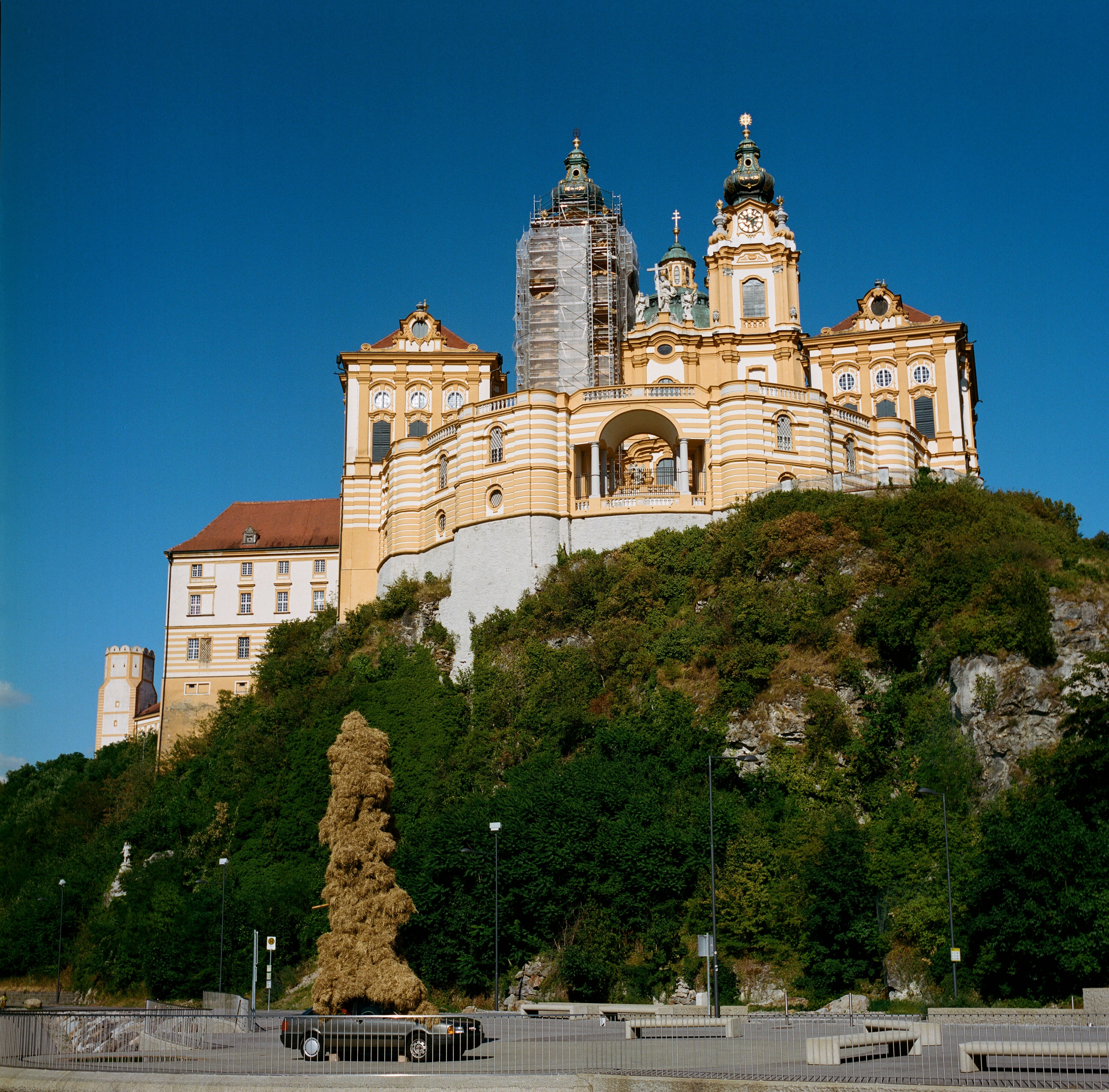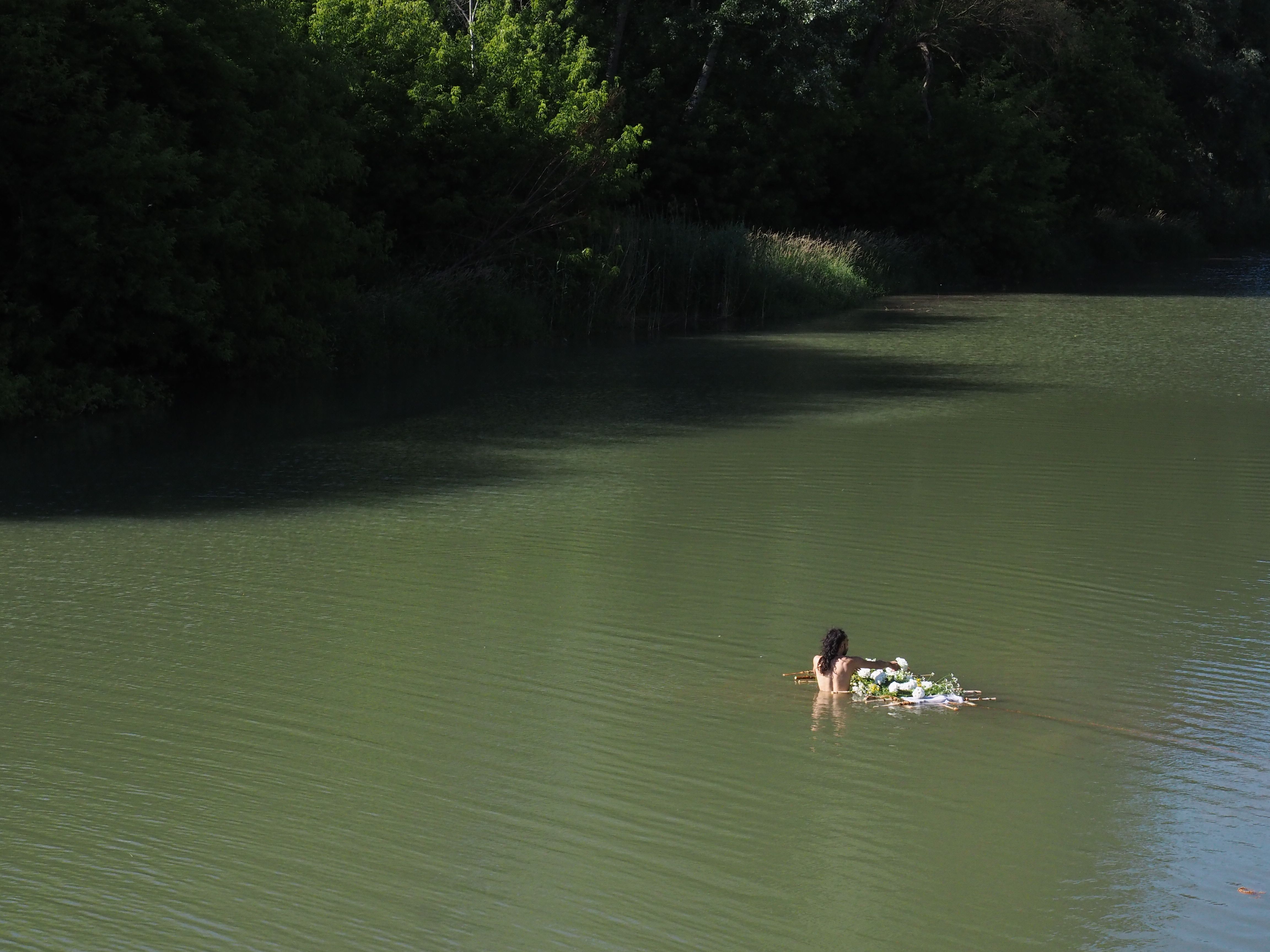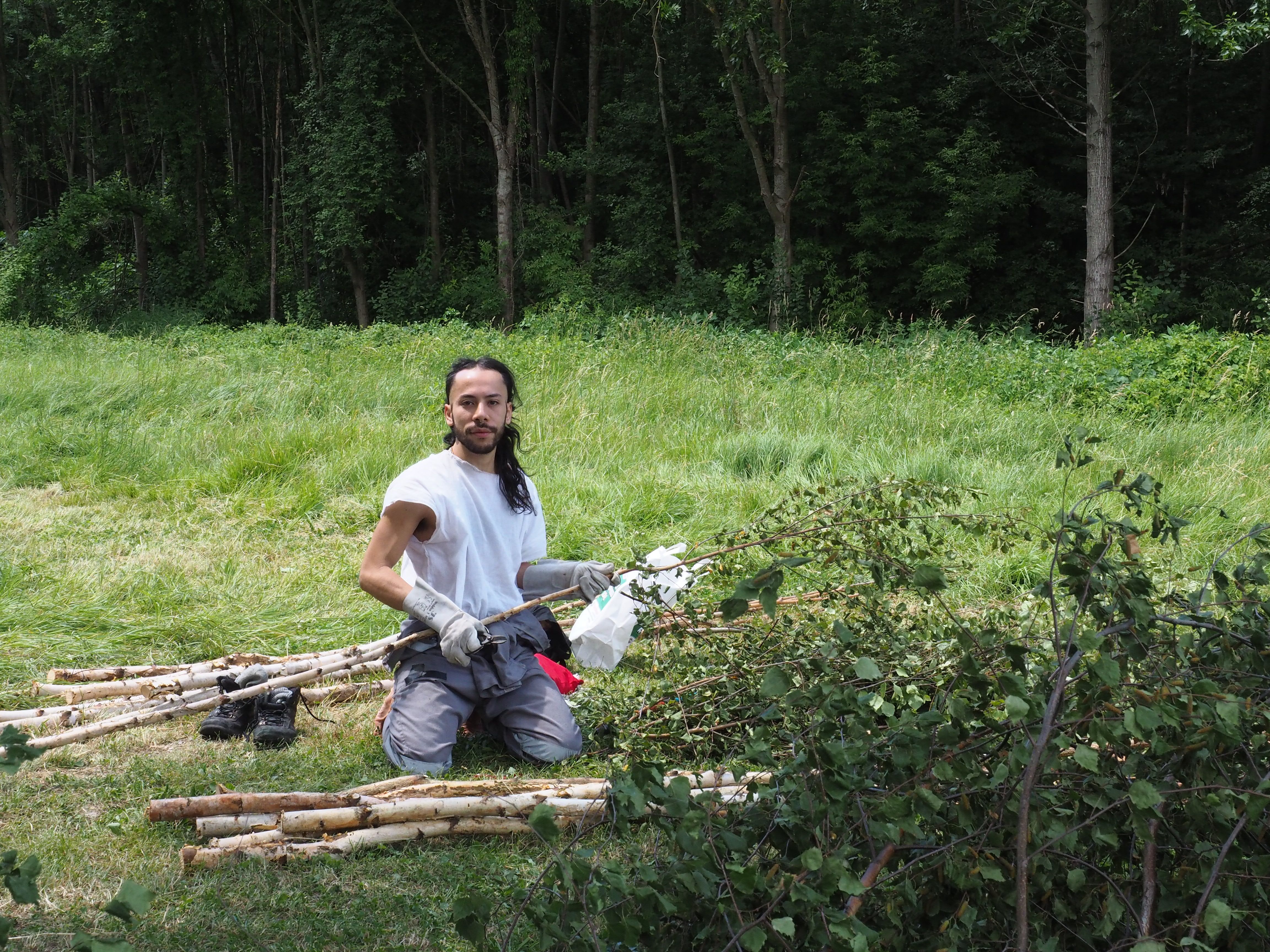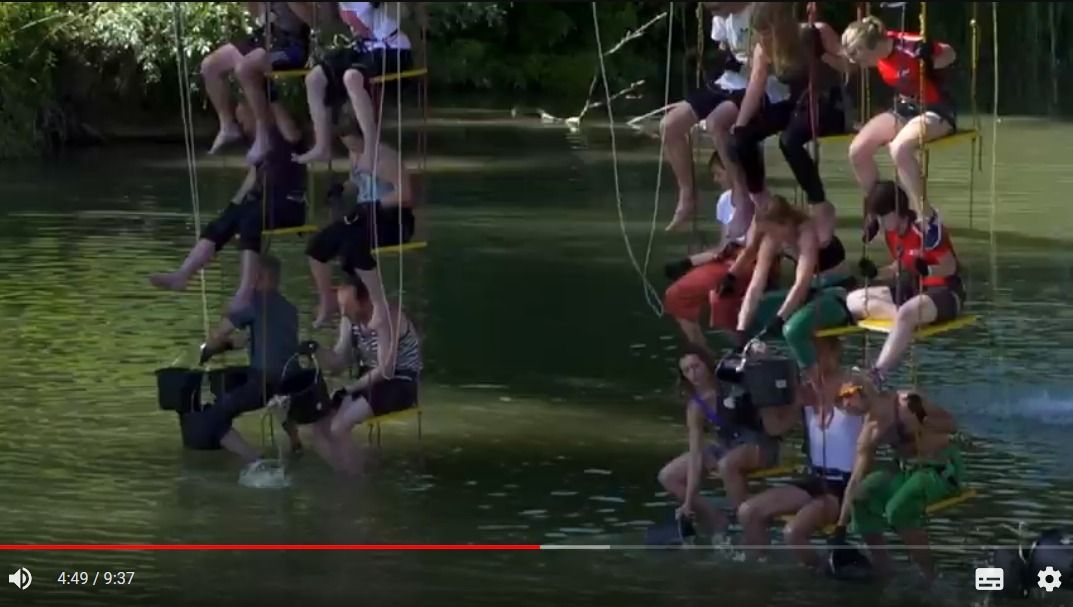Du oder ich? Collective Soul. Ethik des Miteinanders.
BackArtists
- With
Information
A temporary exhibition project in the public space of Melk in cooperation with the Department of Art and Culture of the Province of Lower Austria / public art, the Friends of the Melk Festival and the Town of Melk as well as Melk Abbey in cooperation with KulturKontakt Austria / BKA and Fluc as well as the Vienna Academy of Fine Art Department of Art with Extended Pictorial Spatial Action / Sculpture / Installation in Public Space (director Judith Huemer).
Contributors
- Kuration
- Produktion
Contributions
Ðejmi Hadorvić, Giovanna Graziosi Casimiro, Lina Albrikienė, Dante Buu, Olson Lamaj
Billboardproject "Transcultural Emancipation Extension"
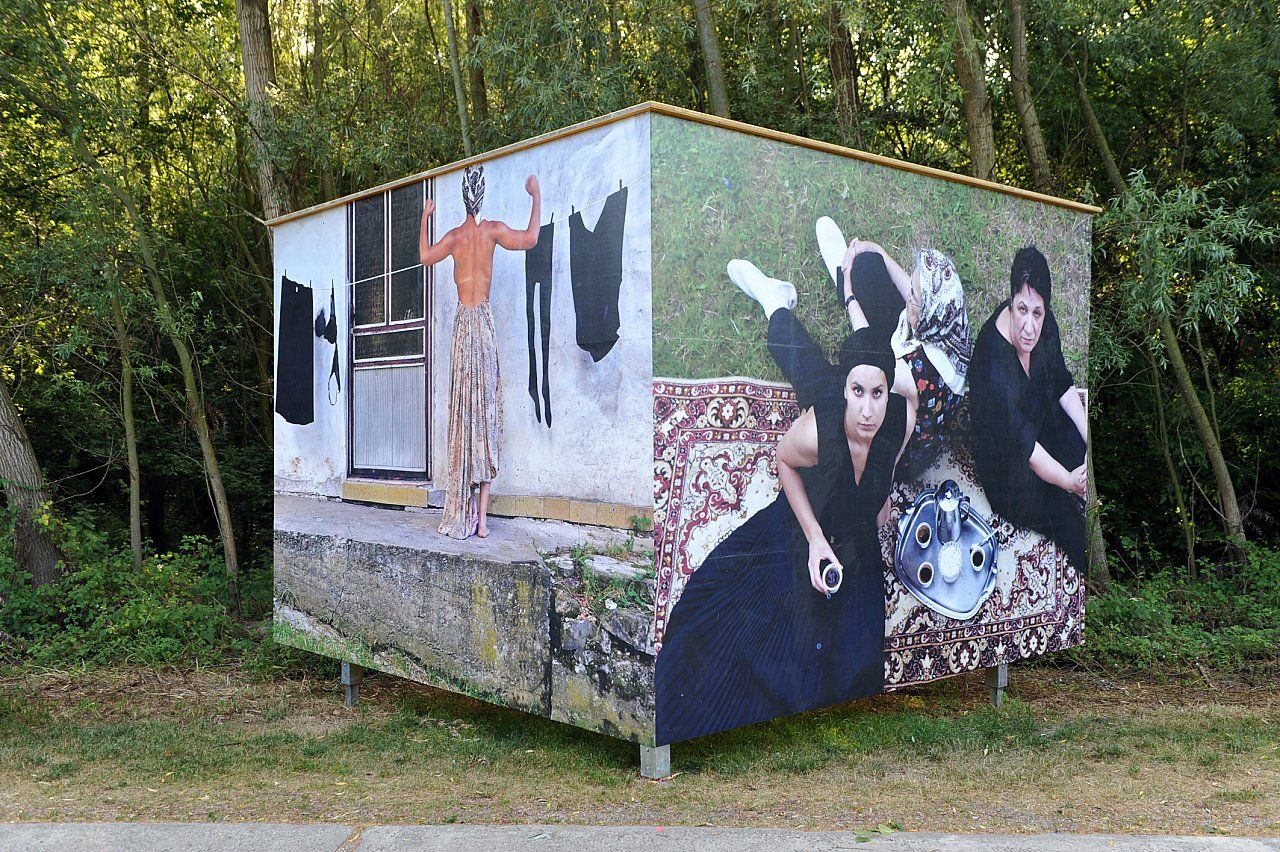
Our current political dynamic is fueling populism, and not even so-called facts tell the truth anymore. In the current discussions about fake news, calls to question alternative facts are getting louder. Social media, big data, and echo chambers structure the spaces of the real. What happens if identity politics are taken over by identitarian politics? What remains unsaid, and what must be clarified when we talk about integration processes in the face of current global migration, when we should actually be talking about accepting plurality?
Youtopia
Giovanna Graziosi Casimiro
Youtopia questions the concept of a utopia in a time of high technology and the awareness of the limits of the human body. An omnipresent cyber culture is replacing faith in a god, in life after
death. In an analogy between technology and religion, Apple to Oracle will have us believe in their omniscience, omnipotence and omnipresence. Through numerous surveillance mechanisms this new god keeps his eye on us without us noticing. There are no races, no genders, no more prejudices, because the new god sees everyone as a small part of a machine, an enormous collection of data. The soul becomes the measured value and the new god waits for the next click.
Zahida is a Feminist
Ðejmi Hadorvić
In my artistic work I aim to show present-day Bosnian women through different aspects, ones that are not dominated by the eyes of others. In recent decades Bosnian women have predominantly been presented through two images: as victims or as housewives. I would like to break with these stereotypical images, produced by an ethnic affiliation, that seek to define me as a Bosnian woman according to a cultural habitus.
The Promised Land
Lina Albrikienė
The starting point for The Promised Land is formed by the comprehensive research that she carried out on site in Detroit as a historical, epic and symbolic example. Since its foundation Detroit has suffered three race riots and three times has been burned to the ground. During Detroit’s rise, between 1920 and 1960, as a result of large-scale migration flows more than a million African Americans came to the city from the cotton fields of the South. During the boom years of the auto industry Detroit was considered the Promised Land. Since its decline, Detroit with its abandoned skyscrapers looks like a ghost town.
Mi nikada nismo bili
Dante Buu
Mi nikada nismo bili is formed by a series of close-ups that combine kissing couples with Bosnian slang expressions such as ortaci (in work jargon, Serbian
slang for best friend), jarani Bosnian slang for best friend), kumovi (best husband for marriage and as a family father), drugovi (friends, mates) and bráci (brother) to describe mutual attraction between heterosexual men.
Passing Through The Grass
Olson Lamaj
Passing Through The Grass reflects our current way of life that is becoming increasingly defined by constant movement from one country to another. On one of my flights from Austria to Albania, I looked out of the airplane window and I saw how the plane, as it flew over a soccer field near the airport, cast a shadow. This episode inspired me to return to this location to take a photograph of the soccer field with the shadow of a plane flying over it.
Female Obsession
Watch Out for Counterbalance
In their installation Watch Out for Counterbalance, Female Obsession attached manifesto-like statements to the bridge in Melk that addressed the demographics of our contemporary social structure as part of the context of Du oder ich? – Collective Soul. Ethik des Miteinanders (You or Me? Collective Soul. Ethics of Togetherness).
Libidiunga Cardoso, Caetano Carvalho, MARSSARES
PALAFITA (für Melk)
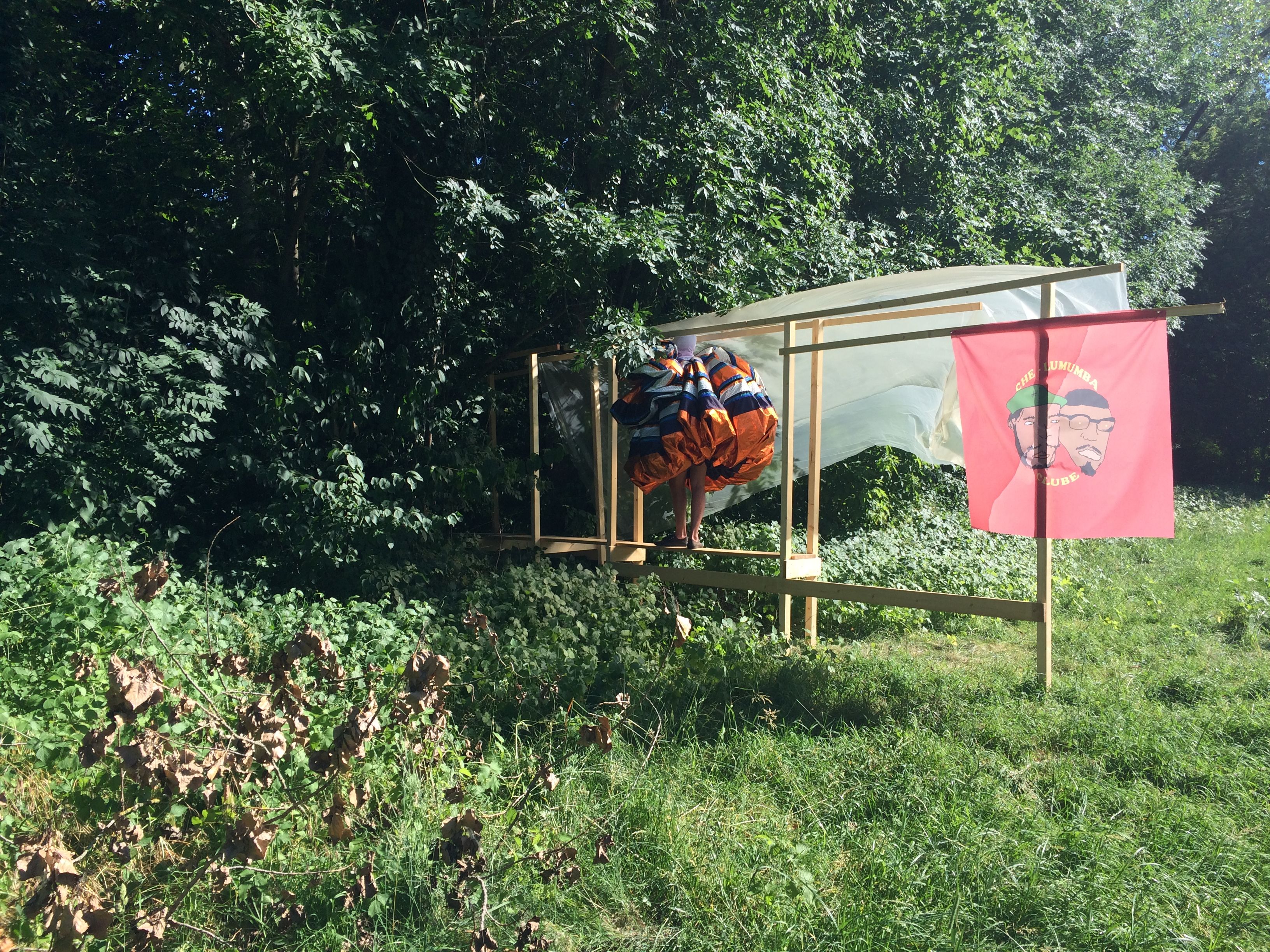
The installation PALAFITA (for Melk) by the Brazilian artists Libidiunga Cardoso & Caetano Carvalho & Marcelo Marssares was made of wooden poles and boards and represented the permanent flux of construction and remodeling. The interactive and participatory concept drew from the Brazilian art movement called Neo-Concrete (Neoconcretismo), and the artists used the same constructivist vocabulary that has been employed in Brazilian art since the 1950s for the realization of processual and participatory projects, applying it as a clear statement for a form of art in which sculptural constructions, performances, and public space interact. PALAFITA is a kind of living organism that borrows methods of tropical architecture and invites visitors and passersby to us their own creativity. The object behind PALAFITA is to make room for sensory and formal experiments by incorporating the senses of hearing, feeling, smelling, and touching, while expanding the bodily experiences of everyone involved. Through this process of self-empowerment, PALAFITA refers to oppositional movements in Brazilian art in which artists protested against how the country’s post-colonial background influences the adoption of values . As a site-specific installation, PALAFITA acted as a stage for performances by the artists involved and for participatory projects.
Kadija de Paula, Chico Togni
Centenario da erradicação de los Perros y Gatos de Las Grandes Ciudades

Before the official opening of the art project Du oder ich? Collective Soul. Ethik des Miteinanders (You or Me? Collective Soul. Ethics of Togetherness), two different types of flyers were distributed to the people of Melk from June 10 to 15. The first flyer – written in futurist, science-fiction-style language – announced the 100-Year Anniversary of the Extermination of Dogs and Cats in Major Cities (Centenario da erradicação de los Perros y Gatos de Las Grandes Ciudades). The second flyer invited the community of Melk to an opening celebration and performative inauguration of a public barbecue pit constructed by the artists in the form of a sculptural installation. At the center of the performance was the killing, skinning, cleaning, and roasting of a lamb from a regional farm. In her works, the artist Kadija de Paula likes to combine texts and performances with food as a way of questioning common notions of work, self-organization, economic practices, and the inhumanity of our food industry. Chico Togni builds structures and objects out of found materials to stage events intended to enable us to experience social interaction. Together, the two artists create situations and happenings that question the value of resources and traditional social practices. Previous joint projects include dinners in which they cooked food found in dumpsters as well as projects in which they designed everyday objects out of found materials.
TEAM OLYMP
Niagara Melk
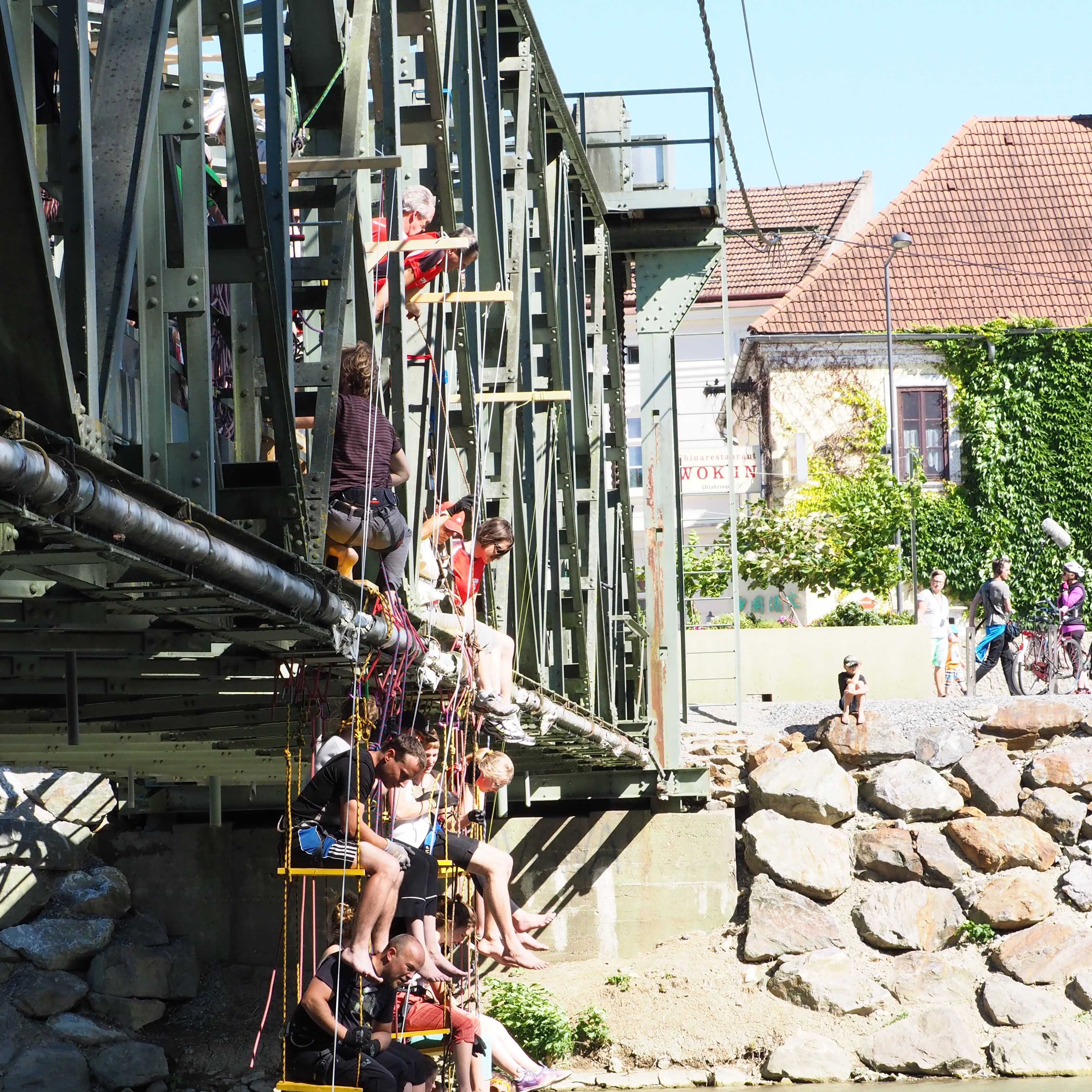
The Danube brings tourists to Melk — it defines the beauty of the Wachau valley. But this force of nature also holds formidable dangers. The potential for flooding is everpresent in Melk — the city is armed against the threatening water masses. The steelbridge over the arm of the Danube has a special protective mechanism: a lifting construction with which it can be raised at high water. With Niagara Melk we want to celebrate a marriage between the bridge and the river. During floods the customary and first way to free a flooded object from water is by forming a human chain and emptying the water with buckets. We employ this language of form. Not to counteract a natural catastrophe but to generate a natural spectacle. A waterfall that is generated by the collaboration and power of many people. The sounds of the performance are recorded, and in the following weeks they can be heard as an acoustic memory from a sound installation on the bridge.
Julia Riederer, Lisa Jäger, Nikolaus Eckhard (Students from the Vienna Academy of Fine Art, Department of Art with Extended Pictorial Spatial Action / Sculpture / Installation in Public Space.)
Taro Meissner
One as One
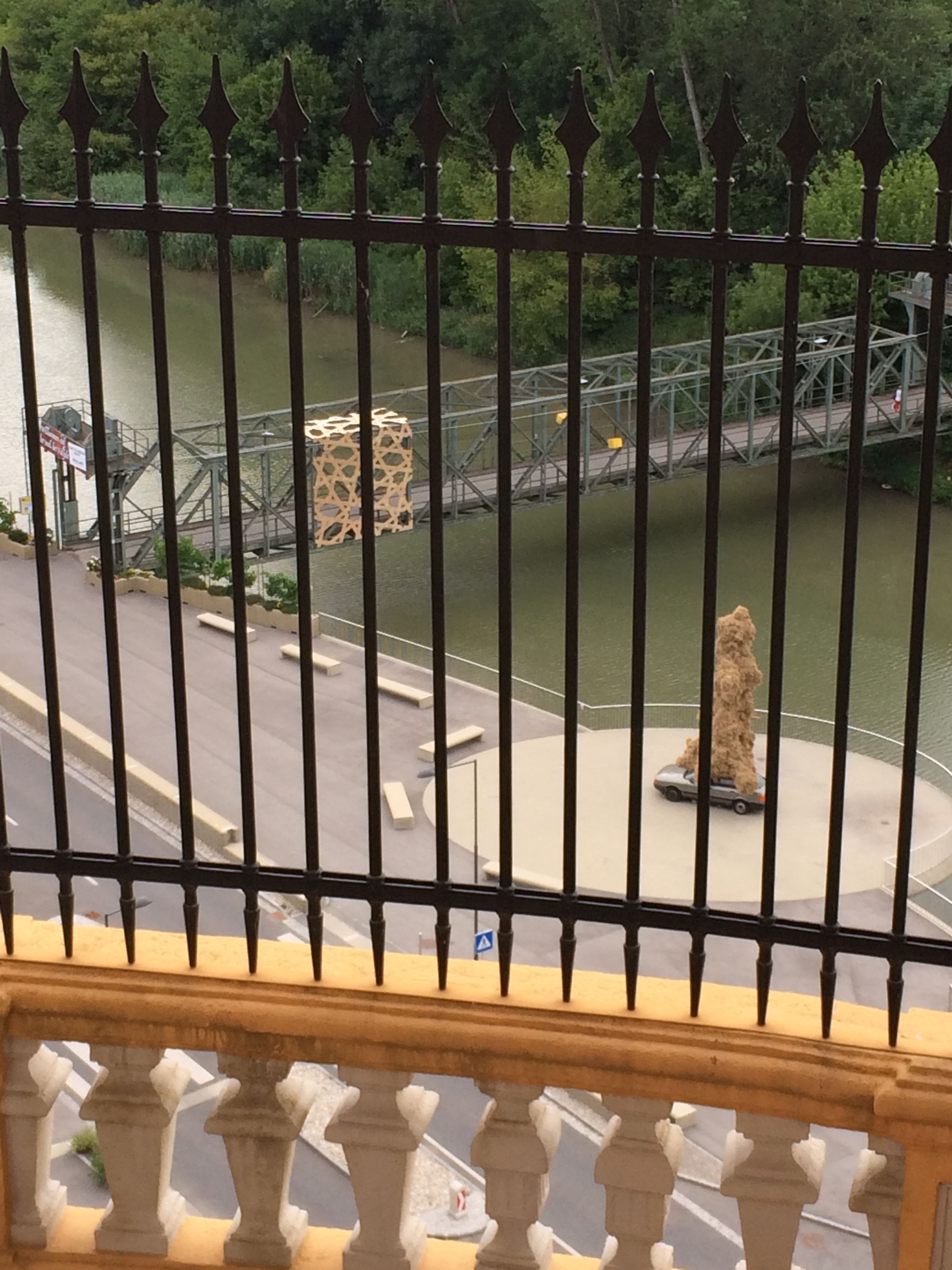
An ornament constructed from simple plywood boards and threaded rods reflects the naked, exposed structure of the St Leopold Bridge. The strict geometric form of the bridge is the basis on which the ornament emerges. A module is created with the aid of lines and circles, a construction set that transforms the bridge but does not detract from its true character, but highlights it and merges into it.
The fragmentary state of this ornament is based on various questions concerning the nature of an ornament. It examines the extent to which the statement that not all parts are needed in order to understand the whole holds true, according to which it is possible to arbitrarily remove or add parts of an ornament without fundamentally affecting the overall understanding. This phenomenon of emergence, that something is more than just the sum of its parts, is examined here. In particular whether, how and when the individual parts of a group are not seen just as representatives of it but are also recognised and understood for themselves individually.
Cäcilia Brown, Marc Alexandre Dumoulin, Baptiste El Baz
Jacquerie des Croquants
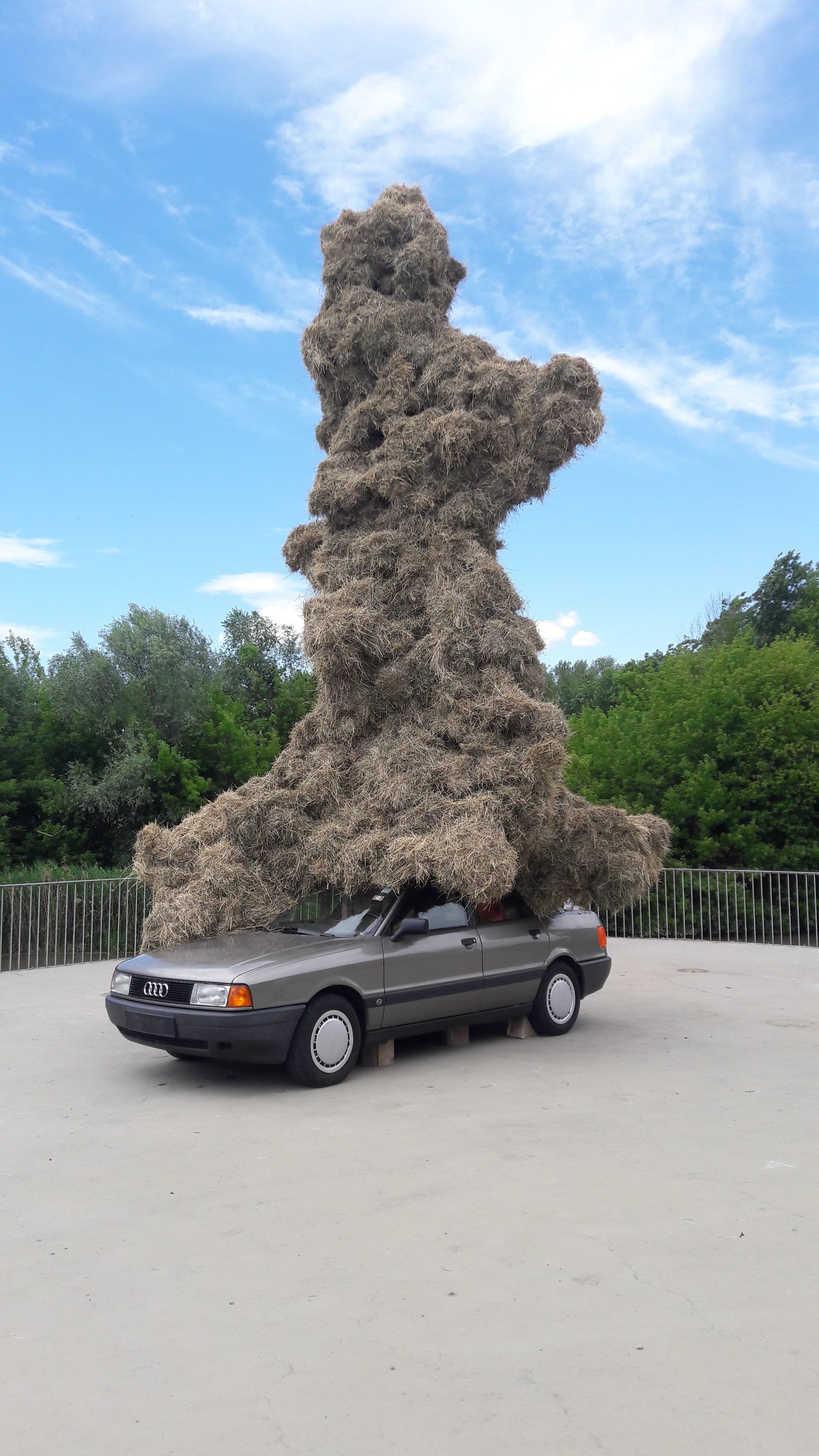
Mounted on a car is a column like sculpture made of straw on a wooden framework, reminiscent of a plague column. We thought of the plague column because it occurs as a sculpture in public space throughout the whole former area of the Habsburg empire, and thus has an unusual background — one
of an uncontrollable force that threatens the existence of humankind itself. Today the situation may be different, but the rise of radical extremism, the violence in connection with the “refugee crisis”, the wars and conflicts in Syria, Afghanistan etc., the sabre-rattling by various heads of state and the rampant populism are all contributing to the atmosphere of a state of emergency and helplessness in the face of a world that seems to be sinking into chaos and disaster. The hay pillar on the car evokes various differen associations for us: customs, processions, midsummerfestivals, Guy Fawkes’ Day, carnival processions etc.
Daniel Lie, Libidiunga Cardoso
Performances
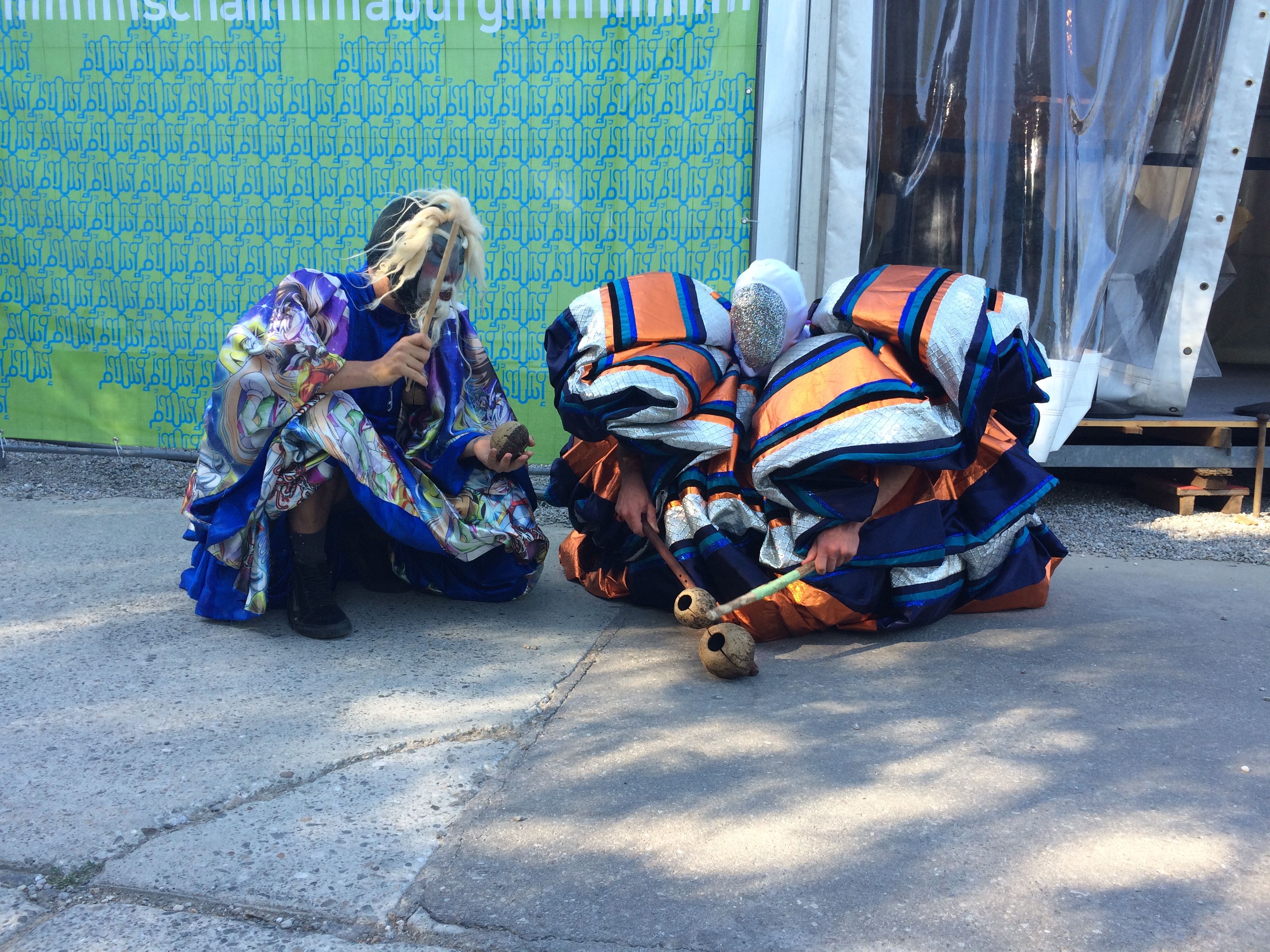
Exorbitant Exuberance
Libidiunga Cardoso
As if escaped from a computer game, two performers dressed as avatars walk through the town of Melk. The term avatar, meaning descent, derives from Sanskrit and refers to the descent of an
imagined deity into the earthly spheres. In internet forums and social networks, the 3D figure or the icon of the avatar serves as a visual identification figure. In the performance EXORBITANT EXUBERANCE, the two avatars walking through Melk develop a direct choreography in their use of public squares, available urban furniture and monuments. They question cultural forms of expression in the context of public space as a location for the differentiation of social relevance and expectation with regard to politically motivated concepts of art.
Preparation
Daniel Lie
In his performance Preparation Daniel Lie builds a flat bed out of wooden branches near the river and decorates it with flowers. In the river water, following the rhythm of the waves, the flat bed, like a stretcher, becomes a transcendental statement on processes of letting go and related rituals. Preparation addresses the inevitability of death and the sociopolitical function of emotional fields, through the creation of which, using ritualised procedures, various groups of individuals simultaneously share the same emotions, as in the Brazilian Candomblé ritual for example.
Olson Lamaj
Passing Through The Grass
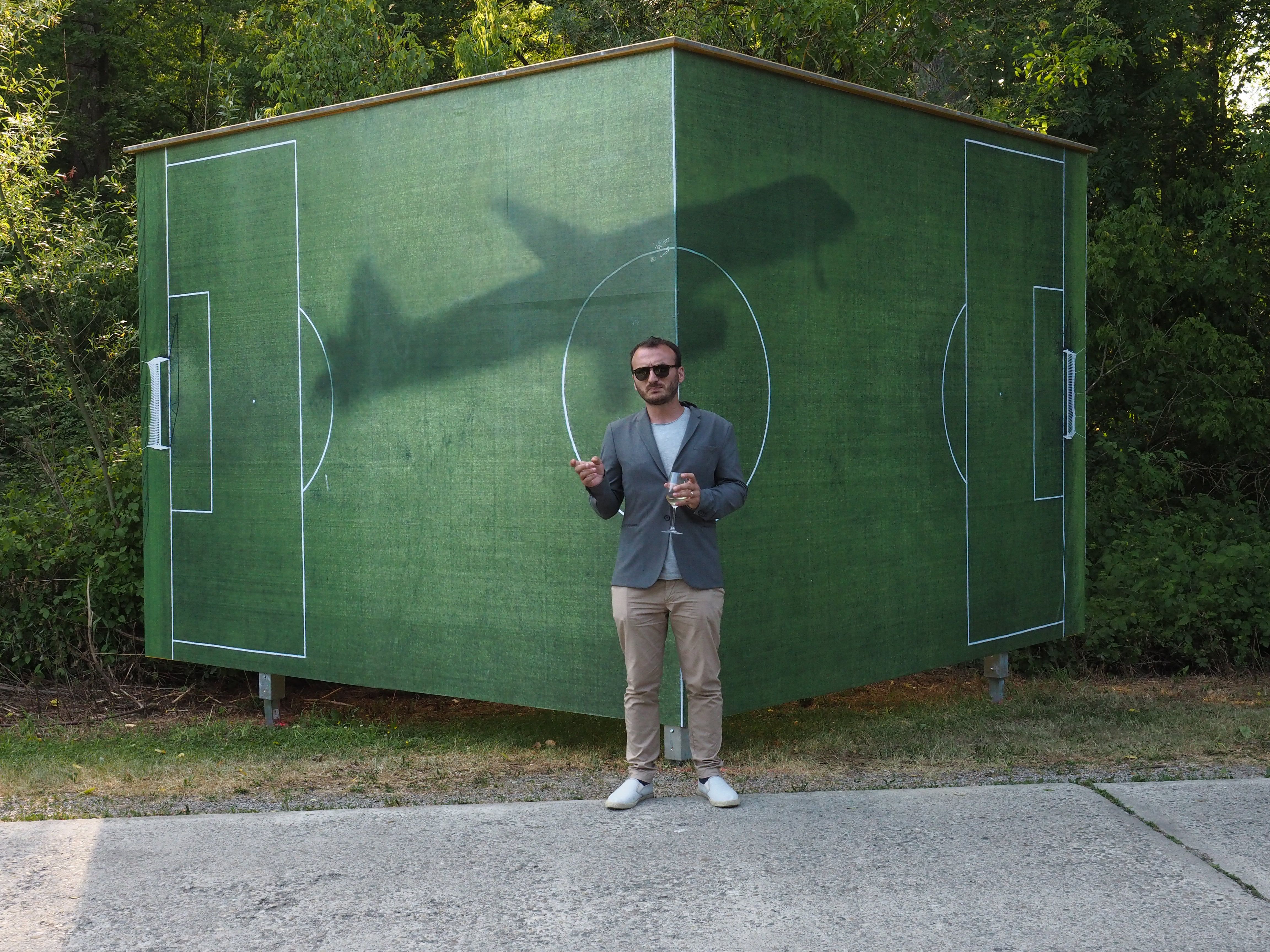
Passing Through The Grass reflektiert unser gegenwärtiges Leben, das mehr und mehr von einem konstanten sich Fortbewegen von einem Land zum anderen handelt. Bei einem meiner Flüge
von Österreich nach Albanien schaute ich aus dem Fenster des Flugzeuges und bemerkte wie das Flugzeug ein Fußballfeld in der Nähe des Flughafens überfliegt und einen Schatten wirft. Diese Episode veranlasste mich dazu, auf dieses Territorium zurückzukehren, um ein Foto von dem Fußballfeld zu machen, mit dem Schatten eines Flugzeuges darüber.
Images (24)
